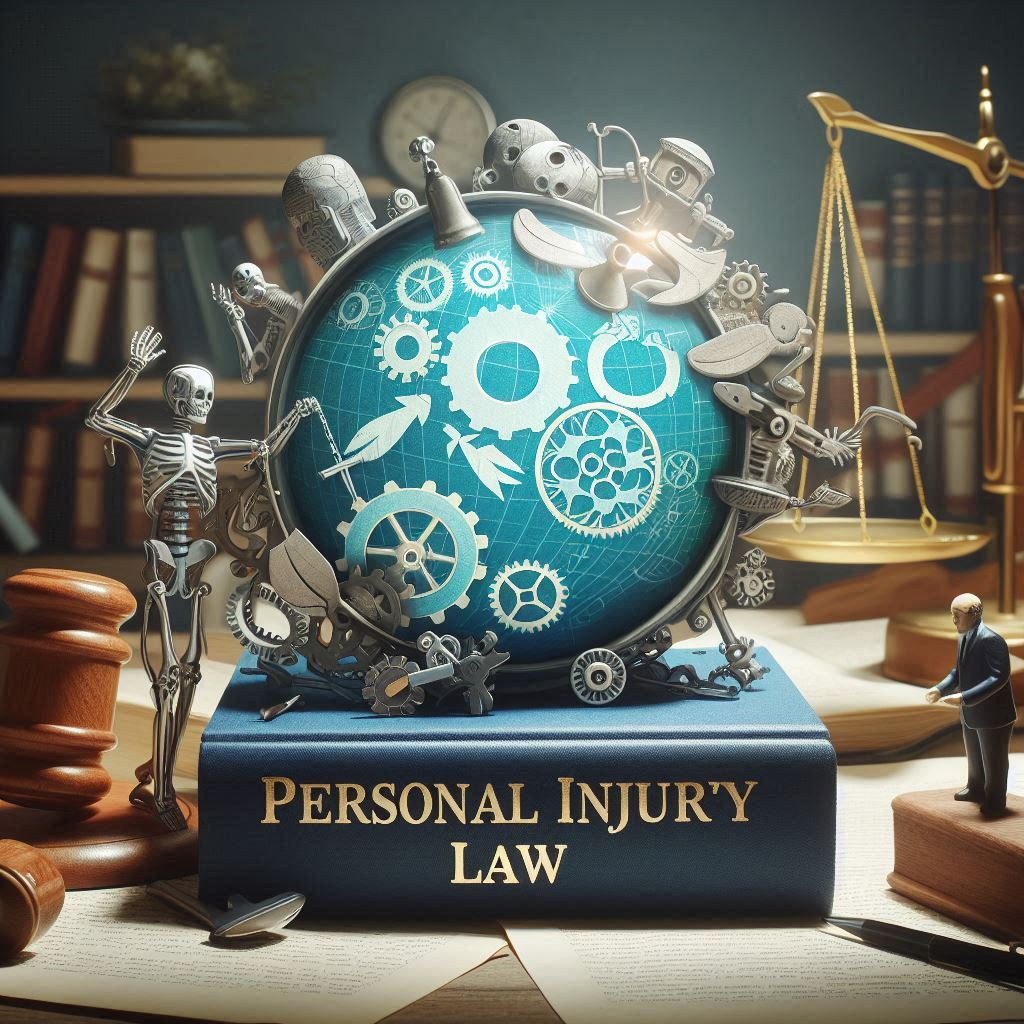
Understanding Personal Injury Law: A Guide for Victims. Personal injury law is crucial for those who have suffered injuries due to someone else’s negligence. Whether it’s a car accident, a slip and fall, or medical malpractice, understanding personal injury law can help victims seek justice. This guide explains the key aspects of personal injury law, including its definition, types, processes, and how to navigate it effectively.
Table of Contents
ToggleWhat is Personal Injury Law?
Personal injury law, also known as tort law, allows victims to seek compensation for injuries or damages caused by another party’s actions. The primary goal is to restore the victim to their pre-injury condition. This area of law covers various incidents, including:
- Car accidents
- Workplace injuries
- Slip and fall cases
- Medical malpractice
- Product liability
- Dog bites
Key Elements of a Personal Injury Case
To succeed in a personal injury claim, certain elements must be proven. These include:
1. Duty of Care
The defendant must have a legal obligation to act with care. For instance, drivers must follow traffic laws. Businesses must maintain safe premises.
2. Breach of Duty
If the Defendant fails to meet the standard of care, they have breached their duty. This could be through negligence, recklessness, or intentional misconduct.
3. Causation
There must be a direct link between the breach of duty and the injury suffered. The victim must show that the defendant’s actions caused their injuries.
4. Damages
Victims must demonstrate the actual damages incurred due to the injury. This can include:
- Medical expenses
- Lost wages
- Pain and suffering
- Emotional distress
Types of Personal Injury Cases
1. Car Accidents
Car accidents are among the most common personal injury claims. Victims may seek compensation for medical bills, vehicle damage, and lost wages.
2. Slip and Fall Cases
Property owners have a responsibility to maintain safe environments. If someone slips and falls due to unsafe conditions, they may file a claim against the property owner.
3. Medical Malpractice
Medical professionals must provide competent care. When they fail to do so, and a patient is harmed, the victim can pursue a malpractice claim.
4. Workplace Injuries
Employees injured on the job may be entitled to compensation through workers’ compensation or personal injury claims if a third party is involved.
5. Product Liability
If a defective product causes injury, the manufacturer or seller may be held liable. Victims can seek compensation for their injuries and damages.
The Personal Injury Claim Process
Navigating the personal injury claim process can be complex. Here are the typical steps involved:
1. Seek Medical Attention
The first step after an injury is to seek medical care. Documentation of injuries is crucial for your claim.
2. Gather Evidence
Collect evidence to support your case. This may include:
- Medical records
- Police reports
- Witness statements
- Photographs of the scene
3. Consult a Personal Injury Lawyer
A qualified attorney can provide valuable guidance. They can assess your case, explain your rights, and help you navigate the legal system.
4. File a Claim
Once you have gathered sufficient evidence, your lawyer will file a claim with the responsible party’s insurance company.
5. Negotiation
Most personal injury cases settle out of court. Your lawyer will negotiate a fair settlement on your behalf.
6. Litigation (If Necessary)
If a settlement cannot be reached, your case may proceed to court. Your attorney will represent you during this process.
Common Misconceptions About Personal Injury Law
1. “I Can Handle It Alone”
Many victims believe they can negotiate with insurance companies without legal help. However, insurance companies often undervalue claims. An attorney can ensure you receive fair compensation.
2. “Personal Injury Claims Are Always Fraudulent”
While some fraudulent claims exist, most victims are genuinely injured. Personal injury law exists to protect the rights of those harmed.
3. “I Have to Go to Court”
Most personal injury claims settle before reaching court. Litigation is often a last resort after failed negotiations.
The Importance of Timely Action
Victims must act quickly. Each state has a statute of limitations that limits the time you have to file a claim. Failing to meet this deadline can result in losing your right to compensation.
Statute of Limitations
- Car accidents: Typically, 1-3 years, depending on the state.
- Medical malpractice: Usually 1-3 years from the date of discovery.
- Slip and fall cases: Generally, 1-2 years from the date of the incident.
How a Personal Injury Lawyer Can Help
Hiring a personal injury lawyer offers numerous benefits:
- Expertise: Lawyers understand the legal system and can navigate complex laws.
- Negotiation Skills: They can negotiate effectively with insurance companies for fair compensation.
- Peace of Mind: Having legal representation allows victims to focus on recovery while the lawyer handles the case.
Also Read This,
The Importance of Law in Society Understanding Its Role, Types, and Functions
Conclusion
Understanding personal injury law is vital for victims seeking justice. It empowers individuals to navigate the legal system and pursue rightful compensation. If you or a loved one has been injured due to someone else’s negligence, consult a personal injury lawyer today. They can guide you through the process and help you secure the compensation you deserve.

